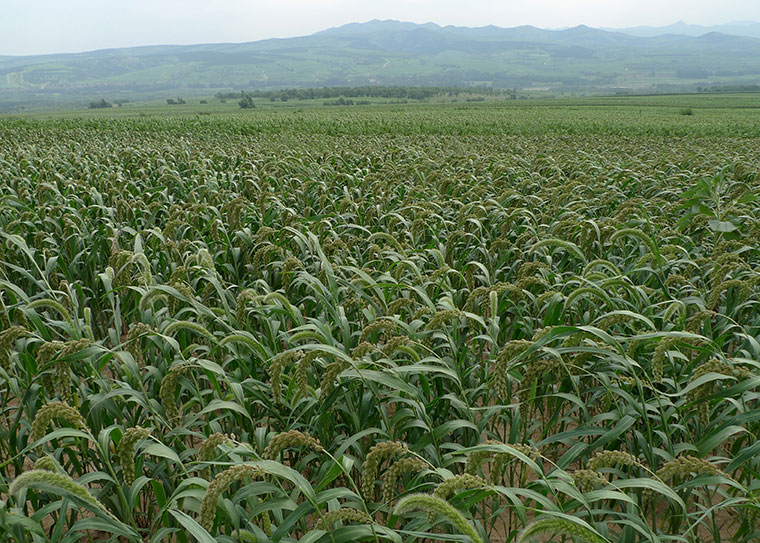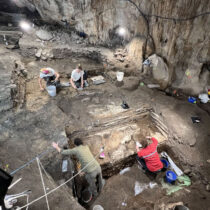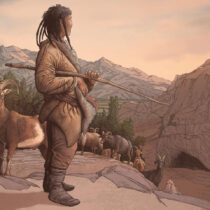Archaeologist Xinyi Liu at Washington University in St. Louis teamed up with Martin Jones of the University of Cambridge to write a new paper for the Proceedings of the National Academy of Sciences that explains how recent research is connecting the science of biological domestication to early food globalization.
Liu, an associate professor of archaeology and associate chair of the Department of Anthropology in Arts & Sciences, proposes a new conceptual framework to understand domestication, which is relevant not only to anthropology but other fields such as biology and ecology.
In this Q&A, he also offers his perspective on how understanding the past conditions can help us to forge a vision for the future.
The domestication of plants and animals is among the most significant transitions in human history. How has our understanding of domestication changed recently?
Our new article focuses on how we conceptualize domestication. A considerable intellectual legacy has depicted domestication as a series of short-lived, localized and episodic events. Some of the literature, particularly those pieces dating back to the early 20th century, envisioned the process as a transition from humans within nature to humans controlling nature in a revolutionary fashion.
The metaphor there is “revolution.” So, as people described it, there was a “Neolithic Revolution” that functioned in a similar way as the “Industrial Revolution” or the “scientific revolution,” — a rapid technological shift followed by changes in societies, according to some narratives.
It is time to reconsider all this. Newly emergent evidence from the last 15 years challenges the idea of rapid domestication. This evidence shows unambiguously that plant and animal domestication in a range of species entailed a more gradual transition spanning a few thousand years across extensive geographies.
How has archaeology contributed to this line of inquiry?
Much of this evidence was brought to light by archaeological and scientific investigations. For example, it took about 5,000 years for the domestication traits of wheat to be fully developed from its wild morphology, according to archaeobotanical work in the Near East. In the lower Yangtze Valley in China, research informed a similar process that ancient communities had cultivated rice for a few millennia before the plant reached domesticated states, in the biological sense.
So domestication has extended in time. But you also argue that it has extended in space. What does that mean?
Over the last 15 years we’ve also seen an improvement in the understanding of how people have moved domesticated plants and animals over continents. In some cases, people moved crops and stocks before the genetic changes associated with domestication were fully fixed within the species. This raises questions about the role translocations played in the domestication process.
Central to our inquiry is the relationship between domesticated crops and stocks and their free-living ancestors, or progenitors. Newer genetic evidence suggests that long-term gene flow between wild and domestic species was much more common than previously appreciated.
It makes sense: At the so-called domestication center, where ancestral varieties were dominant, such gene flow would have been very strong. No meaningful mechanism could have stopped the introgression.
But if farmers took their crops, or herders their stocks, and moved to a new environment beyond the natural distribution of the ancestors, then selection pressures would have changed dramatically. Eventually you are domesticating in a single pathway, with no return. Such a process has been documented genetically and archaeologically in a number of domesticated species, such as maize and wheat.
How do human preferences or traditions factor in?
If crop or stock movements were entangled with the domestication process, the newly introduced species would have to adapt to the new physical environment encountered. But they would have also been adapted to align with new cultural habits. We envision both the physical and cultural adaptation played roles in the fixation of some domestication traits.
Does this research have any implications for modern agriculture?
Understanding the past conditions can help us to forge visions about the future. In that sense, archaeology plays a key role in establishing the historical and community roots of a range of contemporary challenges, such as food security, planetary health and sustainability, providing solutions drawing from humanity at the deepest level.
One such example is the positive impact that archaeogenetic research about millet made on the livelihoods of farmers across the globe. At its 75th session, the United Nations General Assembly declared 2023 the International Year of Millets to raise awareness of the crop’s deep community roots and future potential. There has been considerable recent momentum in understanding the biodiversity and historical geography of millets, which are a diverse group of cereals originating from several continents, including pearl, proso (or broomcorn), foxtail, barnyard, little, kodo, browntop, finger and fonio millets.
Millets can grow on arid lands with minimal inputs and are resilient to changes in climate. They are, therefore, an ideal solution for communities to increase self-sufficiency and reduce reliance on imported cereal grains.
These grains once sustained ancient populations by large. Archaeology played a key role in establishing the original biogeography, domestication and early dispersals of millets. The knowledge we have gained consequently has profoundly impacted food security and conservation in areas where millets are culturally relevant.





